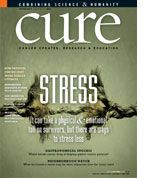Integrative Techniques: A Sampler
A sample of approaches and research done on integrative techniques.
Methods in the integrative medicine arsenal are varied. Some are simply common sense: Exercise and good nutrition are good for patients. Others, like guided imagery, may seem a bit more far out. Here’s a sampler of approaches and the research that’s been done. Note: Advocates like psychiatrist James Gordon, MD, of The Center for Mind-Body Medicine, say medication to treat nausea and other side effects is “always there as a last resort.”
Acupuncture: Studies show acupuncture can relieve nausea and increase energy in adults after chemo. Though kids and needles do not usually get along, children undergoing chemo have tried acupuncture and report the same benefits. The needles usually don’t hurt, says acupuncturist Diane Rooney, LAc, LMT. At worst, she says, the sensation is less painful than a pin prick. Practicing at Morgan Stanley Children’s Hospital of New York-Presbyterian, she’ll ask kids to pretend to blow up a balloon to distract them while a needle is going in.
Guided Imagery: This plays to a child’s imagination. “Imagine having Spiderman there to help you deal with your fear,” explains Gordon. Some studies show that guided imagery can reduce stress, and though results are mixed, there is some evidence that the technique might enhance the immune system.
Energy Healing: “It’s based on the idea that the body has an energy system, and a practitioner can add or manipulate energy for the benefit of the individual,” says touch therapy practitioner Suzanne O’Brien, who has trained in the field and works with young cancer patients at Children’s Memorial Hospital in Chicago. She’ll move her hands a few inches over a patient to assess the energy, and then do some “light, gentle touch” to improve energy. (Reiki is a Japanese variation.) Skeptical doctors are now studying the 3,000-year-old ­technique.
Aromatherapy: While studies of aromatherapy as part of cancer care are just getting under way, oncologists cite anecdotal evidence. “Peppermint is associated with nausea reduction. Lavender is associated with relaxation,” says Mary Hardy, MD, medical director of the Simms/Mann UCLA Center for Integrative Oncology. “Parents can rub a little bit of peppermint oil—diluted with massage oil or lotion so it won’t burn—on hands and feet.” One down side: Some patients who’ve used peppermint oil to combat post-chemo nausea later find that the smell of peppermint will trigger memories—and feelings—of nausea.
Ginger: New research shows that concentrations of ginger root can help relieve nausea. For young patients, some doctors use teas or candies.
